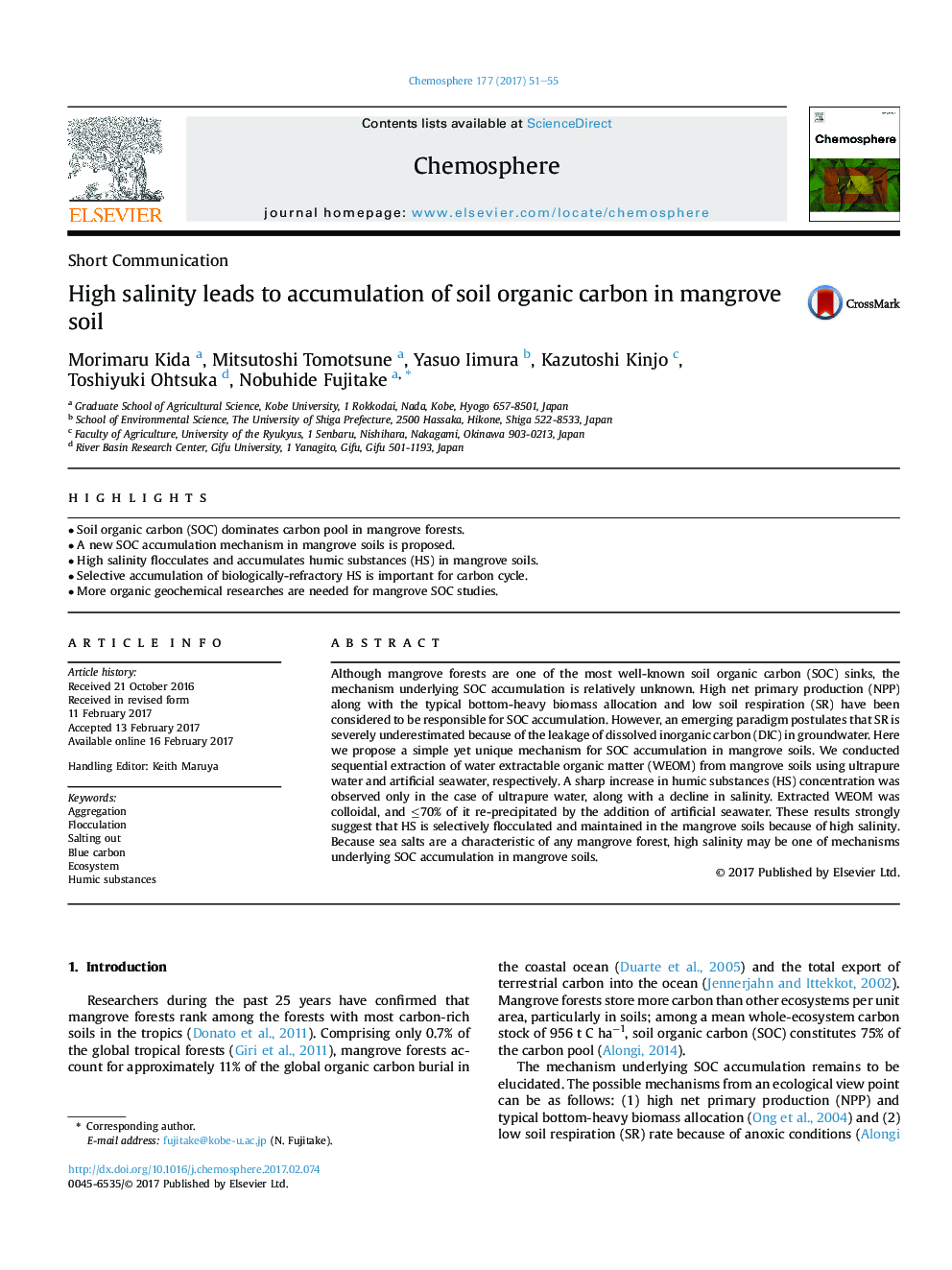| کد مقاله | کد نشریه | سال انتشار | مقاله انگلیسی | نسخه تمام متن |
|---|---|---|---|---|
| 5746279 | 1618794 | 2017 | 5 صفحه PDF | دانلود رایگان |
- Soil organic carbon (SOC) dominates carbon pool in mangrove forests.
- A new SOC accumulation mechanism in mangrove soils is proposed.
- High salinity flocculates and accumulates humic substances (HS) in mangrove soils.
- Selective accumulation of biologically-refractory HS is important for carbon cycle.
- More organic geochemical researches are needed for mangrove SOC studies.
Although mangrove forests are one of the most well-known soil organic carbon (SOC) sinks, the mechanism underlying SOC accumulation is relatively unknown. High net primary production (NPP) along with the typical bottom-heavy biomass allocation and low soil respiration (SR) have been considered to be responsible for SOC accumulation. However, an emerging paradigm postulates that SR is severely underestimated because of the leakage of dissolved inorganic carbon (DIC) in groundwater. Here we propose a simple yet unique mechanism for SOC accumulation in mangrove soils. We conducted sequential extraction of water extractable organic matter (WEOM) from mangrove soils using ultrapure water and artificial seawater, respectively. A sharp increase in humic substances (HS) concentration was observed only in the case of ultrapure water, along with a decline in salinity. Extracted WEOM was colloidal, and â¤70% of it re-precipitated by the addition of artificial seawater. These results strongly suggest that HS is selectively flocculated and maintained in the mangrove soils because of high salinity. Because sea salts are a characteristic of any mangrove forest, high salinity may be one of mechanisms underlying SOC accumulation in mangrove soils.
Journal: Chemosphere - Volume 177, June 2017, Pages 51-55
